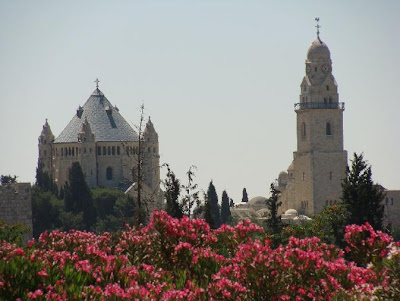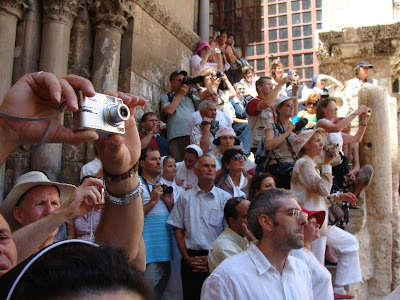Remembering W. Norris Clarke, S.J.

The latest issue of America includes a fond remembrance of Father Clarke by the magazine's associate editor emeritus, John W. Donohue, S.J. The full text of the article is regrettably only available to America subscribers, but the following excerpt (about half of the total article) should give you a good idea of the content:
On a summer day in 1933, William Norris Clarke, an 18-year-old from Manhattan, was hurrying along a pier in Cherbourg toward a trans-Atlantic liner about to leave for New York.
Norris, as he was known to his family and friends, had a few months earlier finished sophomore year at Georgetown University in Washington, D.C., and was planning to enter the novitiate of the Maryland-New York province of the Society of Jesus on Aug. 14.
In Paris, Norris had bought a dozen new books and stuffed them into a knapsack. As he ran, one of the satchel’s straps broke and the books skittered across the wharf. Years later Norris’s eyes twinkled with secret glee when he recalled the choice that had confronted him: abandon the books or miss the boat. While he was rounding up the books, the ship sailed without him.
That was the way he told the story, for he would never have blunted a good anecdote by adding anticlimactic details. But, of course, he did secure another passage, and he did enter the novitiate at St. Andrew-on-Hudson in Poughkeepsie, N.Y., as scheduled. When he died on June 10 of this year, he was 93 years old and had been a Jesuit for nearly three-quarters of a century. He was ordained a priest on June 17, 1945, and joined Fordham University’s philosophy department 10 years later. After he was named professor emeritus in 1985, he continued to teach part-time at Fordham and as a visiting professor elsewhere.
Never in all that time did his mind idle in neutral. He wrote eight books, including, most recently, The One and the Many: A Contemporary Thomistic Metaphysics (2000), and some 70 learned articles. He was also a founding editor of the International Philosophical Quarterly. As recently as the spring 2008 semester [sic: it was actually fall 2007], he conducted a seminar on “Twentieth-Century Personalism” for some young Jesuits studying philosophy at Fordham.
That was an appropriate topic for a farewell tour, because Norris believed, as he once said, that Thomistic metaphysics needs to be enriched by the descriptions of the actual lives of real persons that phenomenologists provide.





































